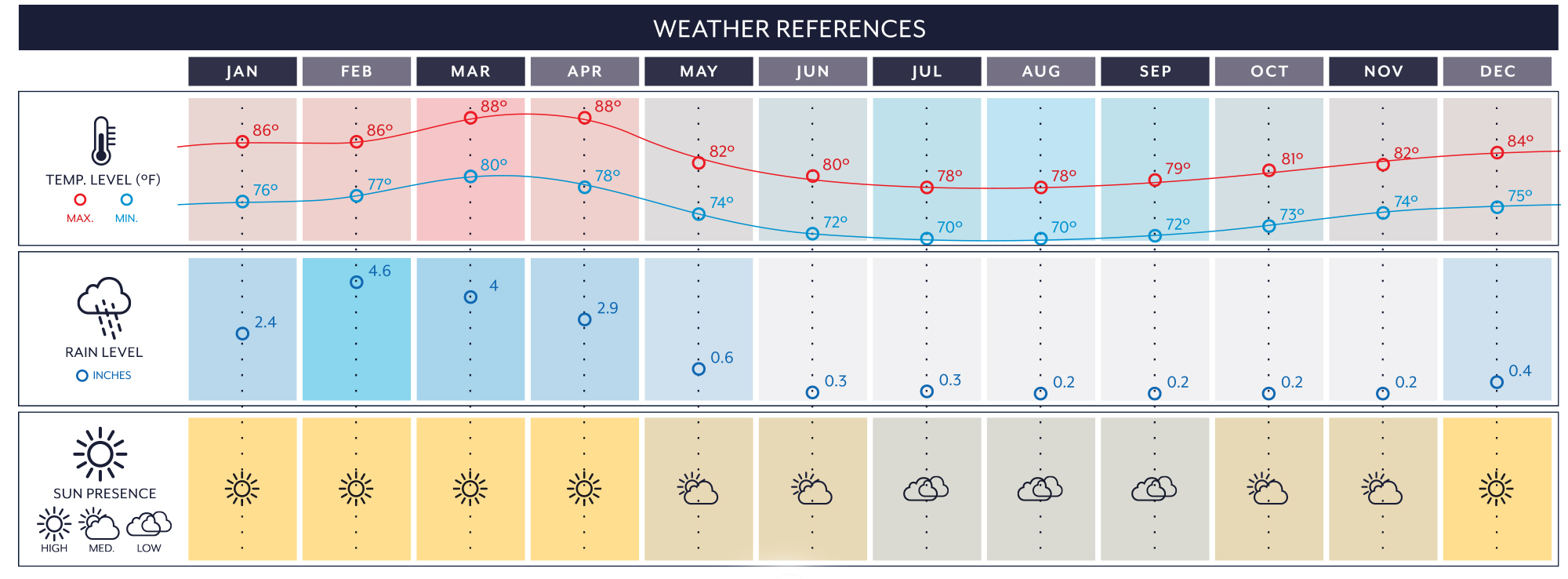The Evolution of Species
Galápagos Islands
Explore this paradise of unique wildlife
There is no other place like this on Earth
The Galápagos Islands’ location on both sides of the equator, in the middle of the Pacific Ocean, makes its landscapes and fauna unique. Its volcanic formations, beaches, mangroves, salt flats, bays, shallows and coral reefs are home to thousands of marine and terrestrial species, many of which are endemic (found nowhere else on the planet).
Some of the most beloved by tourists and locals are Galápagos giant tortoises, land iguanas, marine iguanas, lava lizards, Darwin’s finches, flightless cormorants, Galápagos fur seals and Galápagos penguins, the only species of penguin found in the Northern Hemisphere.
The Galápagos National Park covers the majority of the archipelago, promoting the conservation of its species and offering a wide range of activities. It includes a marine reserve of about 133,000 km2, where it is common to see a wide variety or shark and ray species in large populations.
When to visit the Galápagos Islands
If you want to enjoy a warmer ocean and sunny weather, the best time to come is between December and May. Although divers might find more animals in the ocean between June and October, the water might be too cold during those months for casual swimmers.
Wildlife Calendar
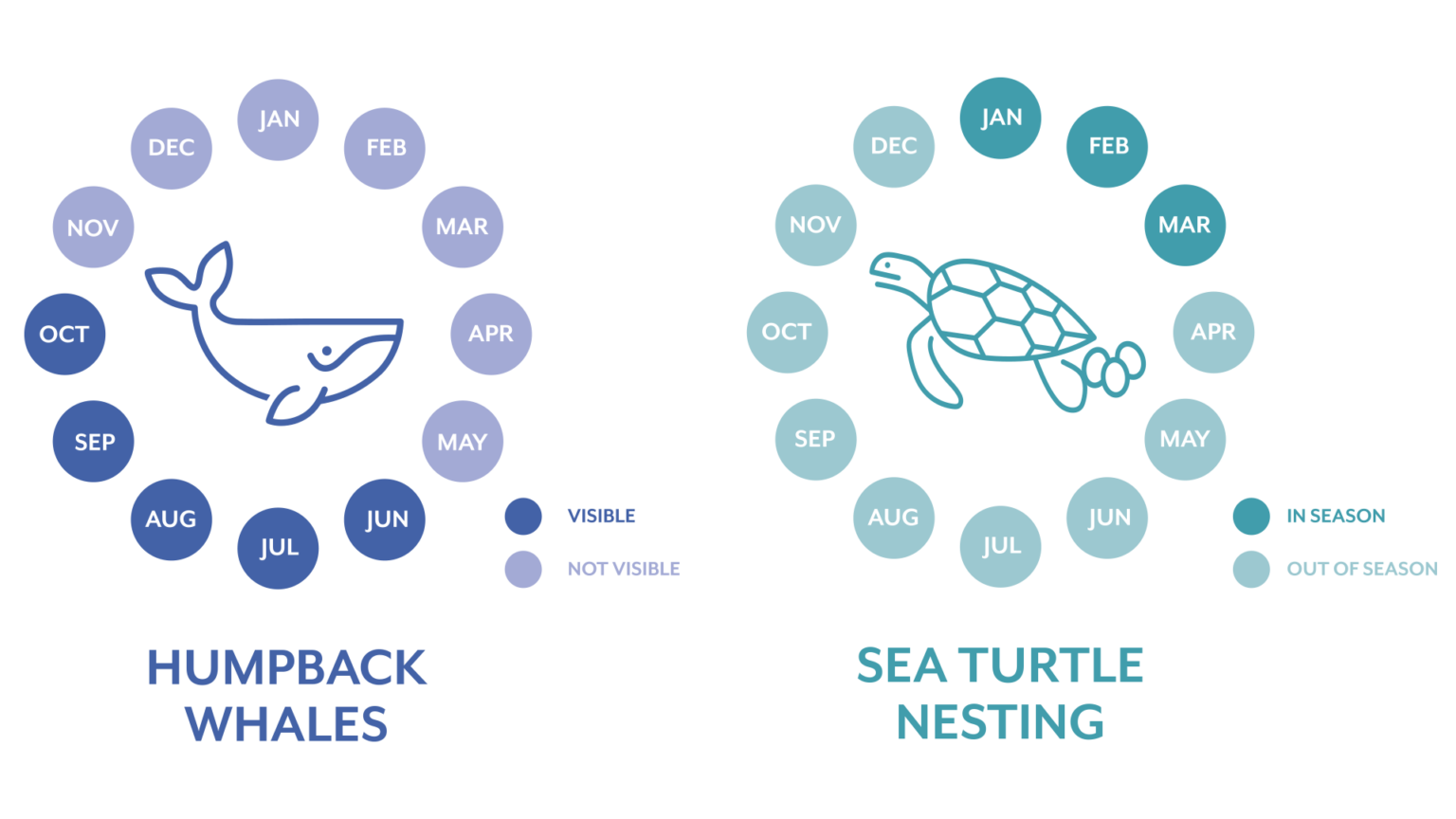
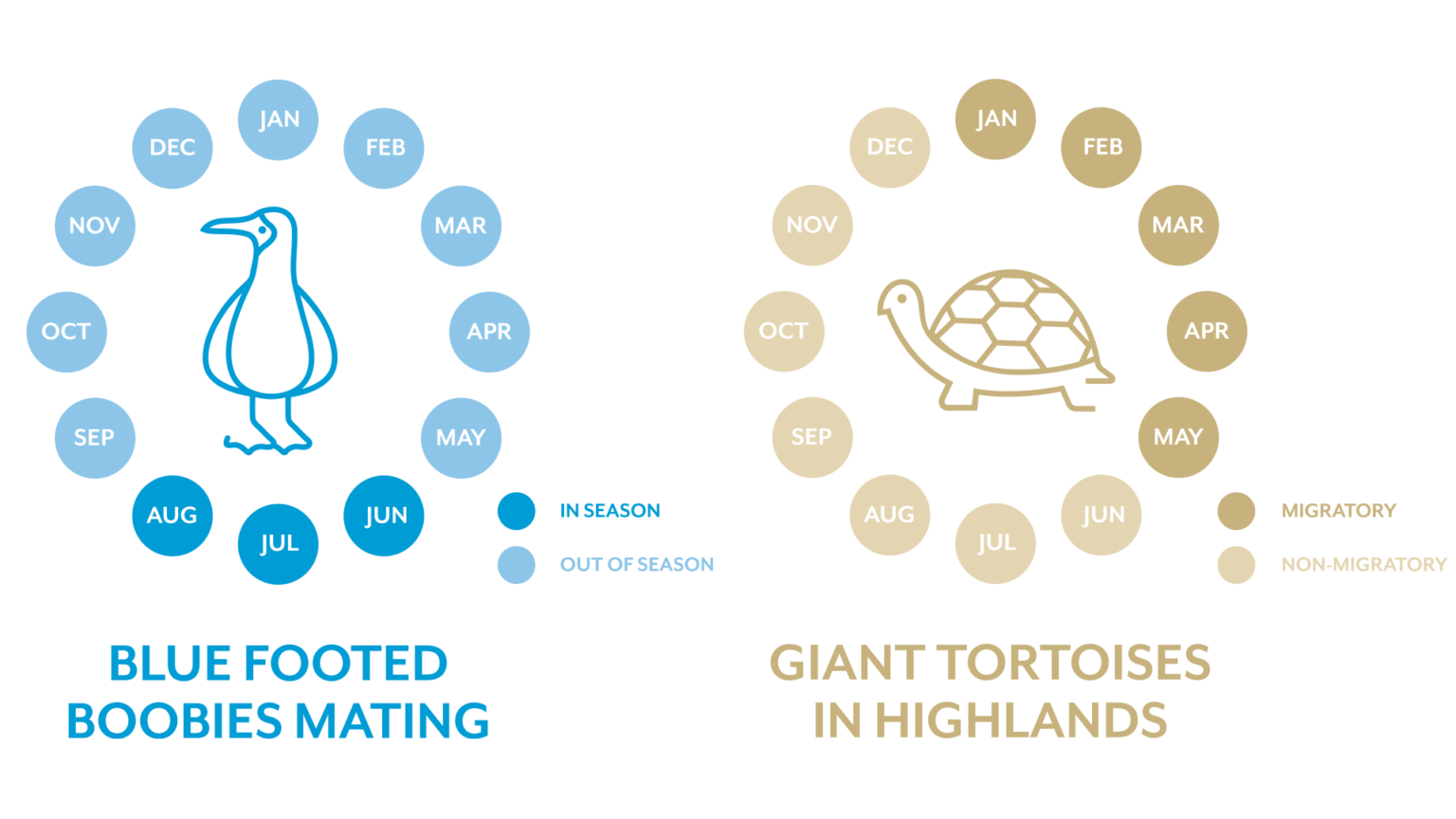
A brief history of the Galápagos Islands
Born from the fire of volcanoes in the middle of the Pacific Ocean, they were once called “The Enchanted Islands.” Their resilient wildlife helped inspire Charles Darwin’s theory of evolution and his book The Origin of Species. Today, the Galápagos Islands are one of Ecuador’s most important ecotourism destinations.
The Galápagos Islands were formed through layering and lifting caused by volcanic activity, about five million years ago. Animals arrived either swimming, flying or floating on rafts or vegetation, and they began evolving on the islands.
Ocean currents that meet at the Galápagos Islands’ location in the equator, such as Humboldt and Cromwell, enrich the ocean with nutrients and create the climate that sustains the islands’ marine diversity. Strong ocean currents were also the reason why some sailors in the 16th century called them the “Enchanted Islands,” as there were times during the year when they seemed to disappear because sailboats could not reach them.
For centuries, the islands’ human visitors were mainly pirates, whalers and colonists. Charles Darwin’s visit in 1835 changed everything.
Darwin’s observations of the physical characteristics of mockingbirds, finches and giant tortoises, which differed from island to island, resulted in one of the biggest contributions to the world’s understanding of evolution: the concept of natural selection, which Darwin introduced in his 1859 book The Origin of Species.
After the Galápagos Islands were annexed as a territory of Ecuador in 1832, colonists from the mainland began settling on the islands of San Cristóbal, Floreana, Isabela, and Santa Cruz, which are still the only populated islands. During World War II, Ecuador allowed the construction of a North American military base on the island of Baltra to prevent a possible attack on the Panama Canal. After that, activity of the islands has been mainly related to tourism.
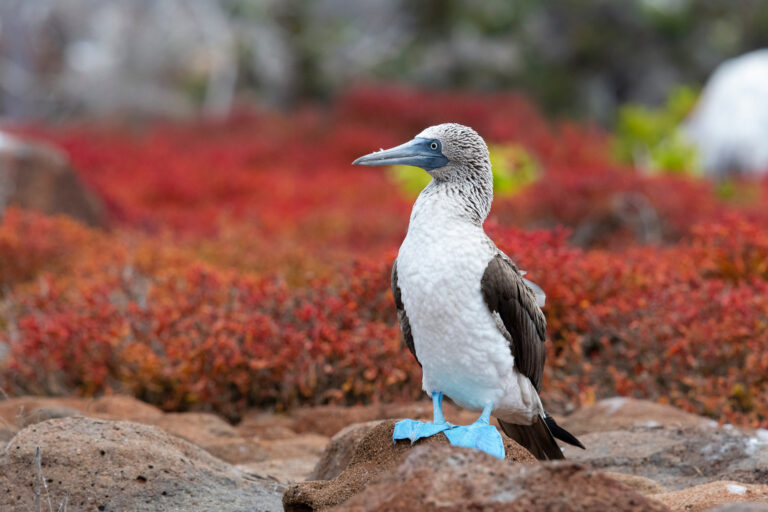
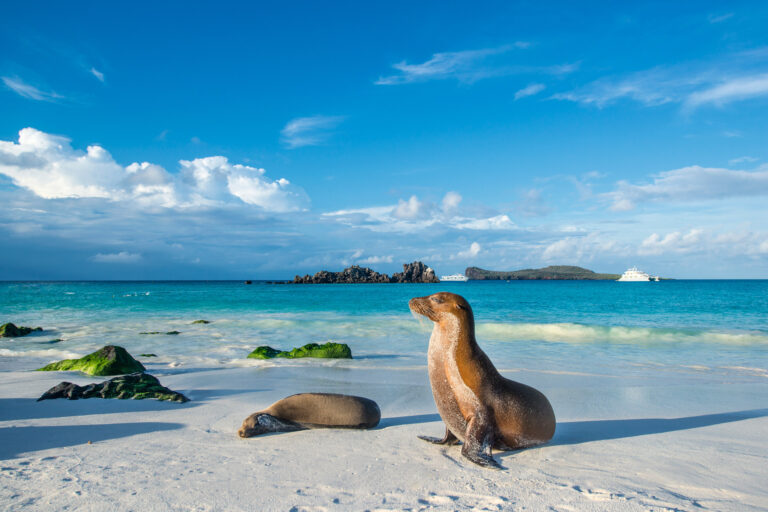
On Land or At Sea
Where to stay in the Galápagos Islands
Whatever itinerary you choose, Galápagos will be one of the most impressive places you ever visit.
There are two main lodging options in the Galápagos Islands: cruise ships of 12 to 100 passengers that dock on different islands throughout their itinerary or hotels in the populated islands of Santa Cruz, San Cristóbal, Isabela or Floreana.
The best option depends on each person’s travel style and expectations.
Cruise-based trips are a good option for people who wish to visit several islands with convenience. They generally offer guided walking tours on the islands, as well as snorkeling opportunities. Passengers must keep in mind that cruise itineraries are not flexible because they must follow the strict regulations set by the Galapagos National Park. Also, cruise-based trips may not be optimal for people who suffer from seasickness.
Staying in hotels on the populated islands may be the best option for highly active people who want more flexibility in the itineraries, without the limitations of cruise docking schedules. There are many opportunities for hiking, snorkeling, and kayaking on the islands. During land-based trips, crossing from one island to another is possible by speedboat or plane (there are airports in San Cristóbal, Isabela, and Santa Cruz).
South Expeditions
Signature Travels in Galápagos
Customer Reviews




